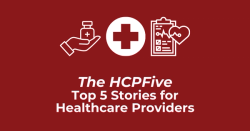
OR WAIT null SECS
Temporary Increase in Venous Thromboembolism Observed After Gout Flare
A brief increase in venous thromboembolism (VTE) was reported within 30 days after a hospitalization or primary care visit for gout flare. The highest incidence occurred during the 16-30 day period after the flare.
A brief increase in venous thromboembolism (VTE) was seen within 30 days after a hospitalization or primary care visit for gout flare, according to a study published in Arthritis and Rheumatology.1
“Large cohort studies have demonstrated an association between gout and VTE compared with the general population,” Edoardo Cipolletta, MD, of the Rheumatology Unit, Department of Clinical and Molecular Sciences at Polytechnic University of Marche in Ancona, Italy, and a team of investigators, stated. “However, to the best of our knowledge whether gout flares are temporally associated with VTE has not been evaluated.”
Gout flares, which include intense articular, peri-articular, and systemic inflammation may affect a patient’s mobility due to their occurrence in lower limb joints. Therefore, these changes may increase the risk of VTE because of vascular statis, platelet aggregation, blood coagulation, and endothelial dysfunction.2
Data from the electronic primary care records from the United Kingdom’s Clinical Practice Research Datalink (CRPD)-Gold regarding mortality and hospitalization were collected. The CPRD collects demographic information, diagnoses, prescriptions, lifestyle factors, and consultations. A self-controlled case series (SCCS) analysis, which was adjusted for age and season, determined the association between VTE and gout flare, which was measured using an adjusted incidence rate ratio (aIRR) with 95% confidence interval (95% CI).
The exposed period was defined as the 90 days after hospitalization or clinic visit, divided into 30-day intervals. The baseline period was 730 days before the flare and 730 years after the end of the exposed period. Inclusion criteria was incident gout, without VTE or anticoagulant prescription before the pre-exposure period, in patients aged 18 years or older.
Out of the 2087 patients diagnosed with VTE after an incident diagnosis of gout, 845 patients (36.5%) had a gout flare during the study period. Of these, 314 patients were included in the analysis because they were first diagnosed with VTE either within the exposed period or within 2 years of its start or end.
VTE incidence was significantly higher in the exposed period when compared to the baseline period (aIRR [95% CI] 1.83 [1.30 – 2.59]). During the first 30 days after the flare, the aIRR (95% CI) was 2.31 (1.39 – 3.82) compared with the baseline period. However, no increase in aIRR (95% CI) was reported during days 31 – 60 (aIRR [95% CI] 1.49,[0.79 – 2.81])ordays61 – 90 (aIRR [95% CI] 1.67 [0.9 – 3.06]). The results were confirmed across sensitivity analyses. VTE incidence was specifically highest during the 16 – 30 day period after the flare (aIRR [95% CI]: 2.89 [1.54 – 5.45]).
The data included covered all English patients, which increases generalizability. Selection and recall bias were minimized due to the prescription, hospitalization, and consultation record inclusion from the entire country. The SCCS was specifically designed to analyze the link between exposures and outcomes of interest as well as controlled for confounding. Further, survival bias was minimized by using an incident gout cohort. However, there may have been possible confounding due to comorbidities. To mitigate this, investigators condensed the observation period to 2 years before and 2 years after gout flare.
“Patients with gout should be counselled about the increased risk of VTE and advised to remain well hydrated and active in the 30 days after the gout flare,” investigators concluded. “The temporal association between gout flare and VTE suggests that further research is required to test whether pharmacological thromboprophylaxis can prevent VTE in patients that have recently experienced a gout flare.”
References
- Cipolletta E, Tata LJ, Nakafero G, Avery AJ, Mamas MA, Abhishek A. Risk of venous thromboembolism with gout flares [published online ahead of print, 2023 Feb 20]. Arthritis Rheumatol. 2023;10.1002/art.42480. doi:10.1002/art.42480
- Stark K, Massberg S. Interplay between inflammation and thrombosis in cardiovascular pathology. Nature Reviews Cardiology 2021 18:9 2021;18:666–82. doi:10.1038/s41569-021-00552-1


